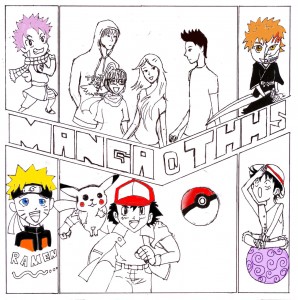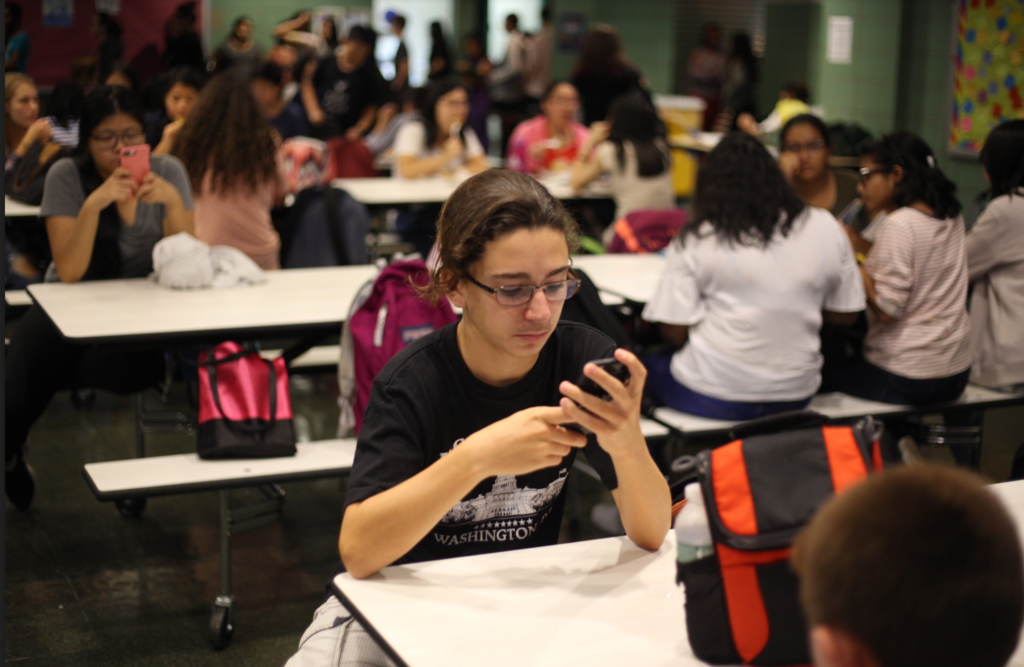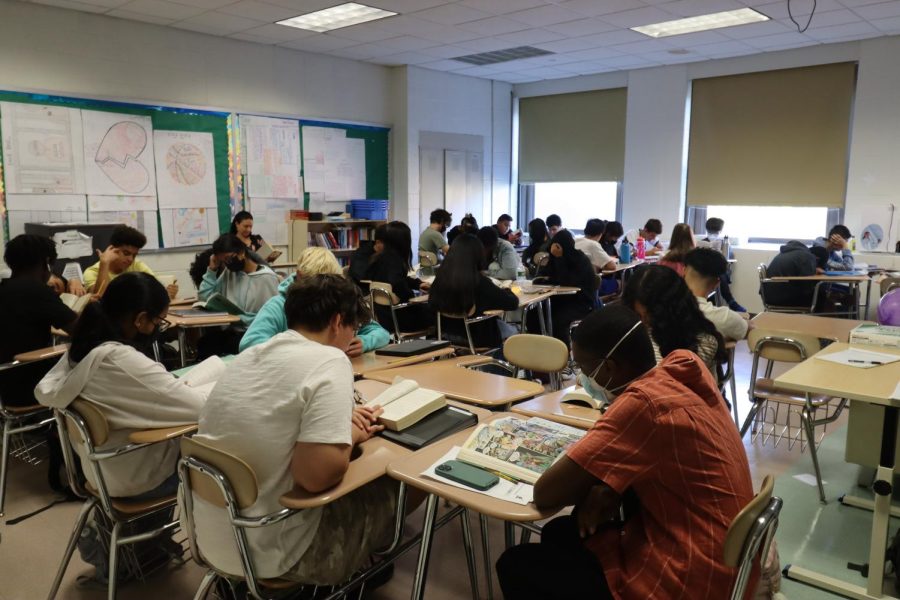

Teachers often wonder what students spend their free time doing. For many students at THHS, their free time often involves manga reading.
Manga, a type of comic book frequently linked to Anime (Japanese animation), has become a major part of the lives of many across the globe, gaining near universal recognition because of the strong ties it possesses with its readers. Sophomore Allegra Santo explained, “I love it for a lot of reasons, but a bit because not only are the stories compelling and often drastically different from each other, but the added illustrations contribute to the entire piece; it’s not only a book, it’s a work of art as well.”
Manga illustrations have their own distinctive features, like any other form of art. Japanese manga is known for its characters who have unusually large eyes and expressive faces. These characters appear to be very free and loose with their bodies, flailing their arms around if they are in a desperate situation, or clenching their hair with their fists if they are frustrated.
Modern manga is attributed to Osamu Tezuka, the creator of several popular manga works that have been read globally and turned into Anime shows by respected directors. His most famous work is Astro Boy which first appeared in 1952 and influenced more recent titles like Naruto and Avatar: The Last Airbender. Coincidentally, these famed stories all have a male protagonist whose goal is to fight evil and save the world. Tezuka’s characters are depicted with the signature eyes and facial expressions manga tends to incorporate.
The difference between manga and anime lies in its presentation – manga is the cartoon version of a storyline, often depicted as a comic book. Anime is nothing short of an animation of that comic book. By literal translation, manga means “humorous picture” in Japanese, but ironically, some of the most popular works of manga are composed of serious heroic scenes.
Nonetheless, not all manga features a heroic main character who needs to save the day. In reality, manga is not limited to a single genre; it spans a great audience, having the ability to reach anyone from the stressed-out scholar who pulls regular all-nighters to the volunteer fireman in your neighborhood.
In many popular series, the protagonist can be a schoolgirl who deals with the classic issues a teenager faces today. In other series, the main character might be an amorphous shape-shifter who lives a double life as a ninja. Such examples are Sazae-San, which translates to “Miss Sazae” and Ijiwaru Baasan, which means the “Mean Grandma.” Manga can be altered by the writers and artists to fit any personality type, which may be why so many people have developed an “addiction” for it.
So just how far has this common interest traveled? At Townsend Harris, an anime club is currently run by Dr. Mariko Sato Berger. “I grew up in Japan and was surrounded by manga and anime. In my middle school time, I even drew using shoojo manga (girls’ manga) in my diary. I would draw the triangle relationship of a boy that I had a crush on, my mean friend and myself in manga style,” said Dr. Sato, when asked how she got interested in manga.
The anime club is diverse in its population, meeting once a week to watch renowned anime and imitate the style of manga. The norm of the club is to watch an anime with Japanese subtitles and discuss initial thoughts and reactions.
Although the anime club is offered to all students, many read manga on their own time. Junior Elizabeth Williams said, “I got into anime and manga because when I was younger, I watched shows on television such as Pokemon, Yu-Gi-Oh and Shaman King. Later, I found more anime and manga online. I like the art style and the sense of continuity in the storyline which is something most American cartoons lack.”
“Anime is to me what shows on television are to other people – I just find it more entertaining. The fantasy and fictional elements are what I enjoy about it. It’s nice to distract yourself by escaping reality every once in a while,” said Nadia Ali, sophomore.




























NiteXblade • Dec 16, 2012 at 5:27 pm
I’m just wondering, what is it that separates the comics of the US from Manga? I understand the cultural and artistic differences, but is it that Manga has that US comicbooks lack?
Katherine • Dec 16, 2012 at 9:54 pm
Most US comics are about superheroes. Manga, while it does have superheroes, has so many different genres too.
Crackerjax • Dec 15, 2012 at 9:16 pm
LOL YES. Manga Addict # 1 right here.